Does Design Miami/Basel fit in the bedroom? Beds are presented like never before at the 17th edition of the fair, through 26 galleries. Seeing these intimate domestic spaces displayed in the dim lighting of the fair gives Design Miami/Basel an otherworldly feel.
With good reason, many of the rarest objects on display owe a debt to the great dreamers of 20th century art, the Surrealists. The Mitterrand gallery has François-Xavier Lalanne’s sympathetic donkey; Friedman Benda exhibits a chair imagined by artificial intelligence; and the Gastou Gallery invites you to immerse yourself in the world of Max Ernst Crib. Here we take you to visit six dream-worthy design displays at the fair.
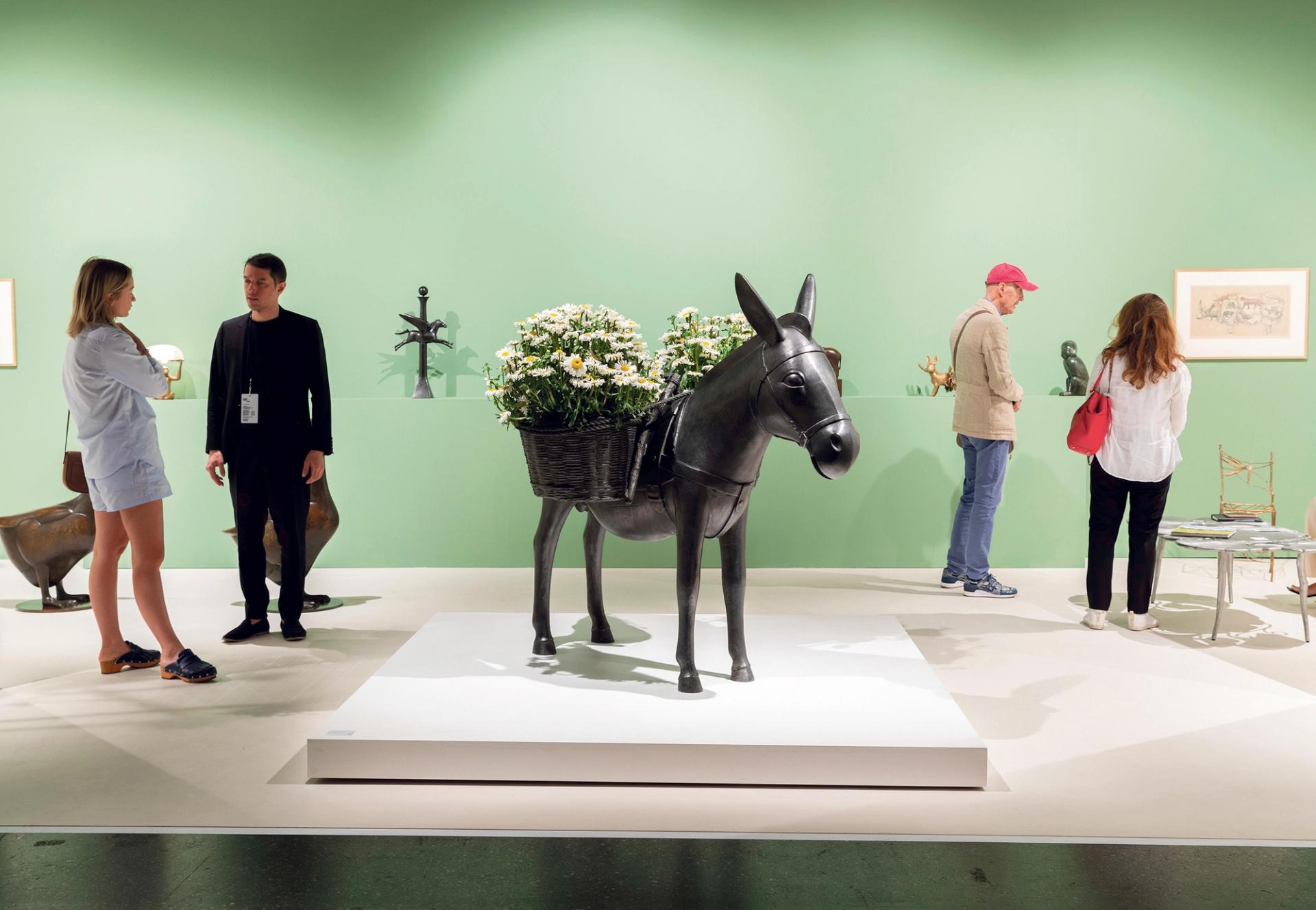
The Planted Donkey (1990) by François-Xavier Lalanne, Mitterrand Gallery david owens
The Planted Ass (1990) by François-Xavier Lalanne
Mitterrand Gallery
Little donkey, little donkey, why are you so expensive? A collector might be tempted to give a lugubrious bray when he learns the price of François-Xavier Lalanne’s sculpture: between 5 and 6 M€. A student at the Académie Julian in Paris in the 1940s, Lalanne met the surrealists Man Ray, Max Ernst and Marcel Duchamp. He and his wife, Claude Lalanne, then began making furniture together under the name Les Lalanne. Well versed in the monochromatic space-age modernism of the time, they incorporated the influence of their surrealist friends, creating functional yet fantastical design pieces. This donkey sculpture has panniers that double as planters, currently potted with daisies.

Interiors (1936) from Villa nel Bosco ad Arcisate by Paolo Buffa
Morentz Gallery david owens
Interiors (1936) of the Villa nel Bosco ad Arcisate by Paolo Buffa
Morentz Gallery
Everything about Morentz Gallery’s booth at Design Miami/Basel comes from a country house nestled in the woods of Arcisate, near Lake Como. The building and all of its interiors were designed in 1936 by Milanese architect and designer Paolo Buffa for his daughter. Lamps, beds, storage and bedside tables have all been designed to complement each other. Buffa favored rarefied materials, as in the carved chestnut wood shelves and wavy inlays.
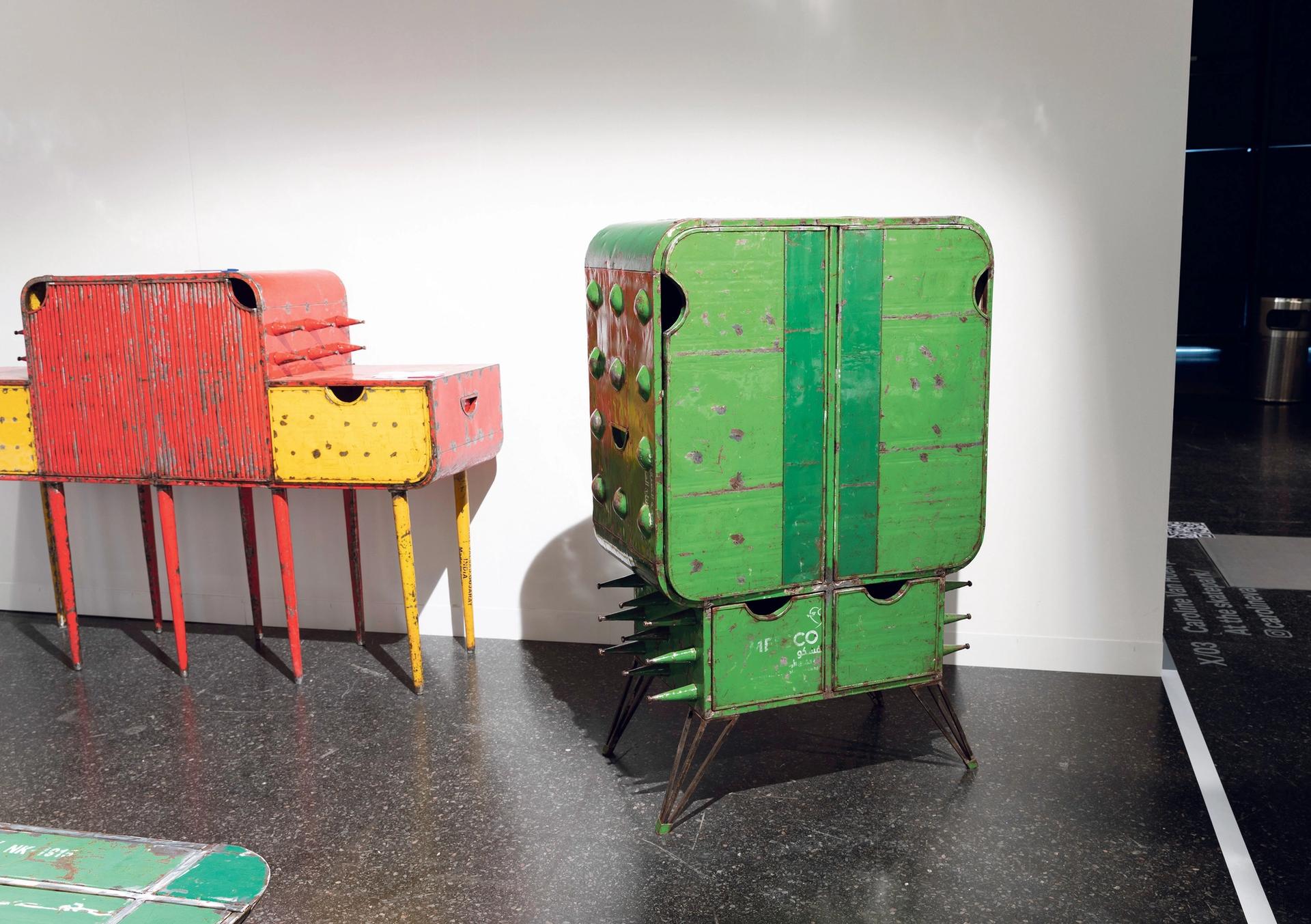
Bolibana (2022) by Hamed Ouattara, foreign agent david owens
Bolibana (2022) by Hamed Ouattara
foreign agent
The Lausanne-based gallery Foreign Agent was founded by the Chinese-Swiss businessman Olivier Chow, a former employee of the Red Cross. The gallery focuses on emerging and mid-career contemporary designers from Africa. Here he shows a series titled Bolibana by Hamed Ouattara, a furniture designer who runs an apprentice workshop in Ouagadougou, the capital of Burkina Faso. Ouattara’s creations are works of creative recovery, like these consoles recycled from discarded colored oil drums on the side of the road. Jimena Sougria green console, is on sale for SFr30,000 ($33,500).
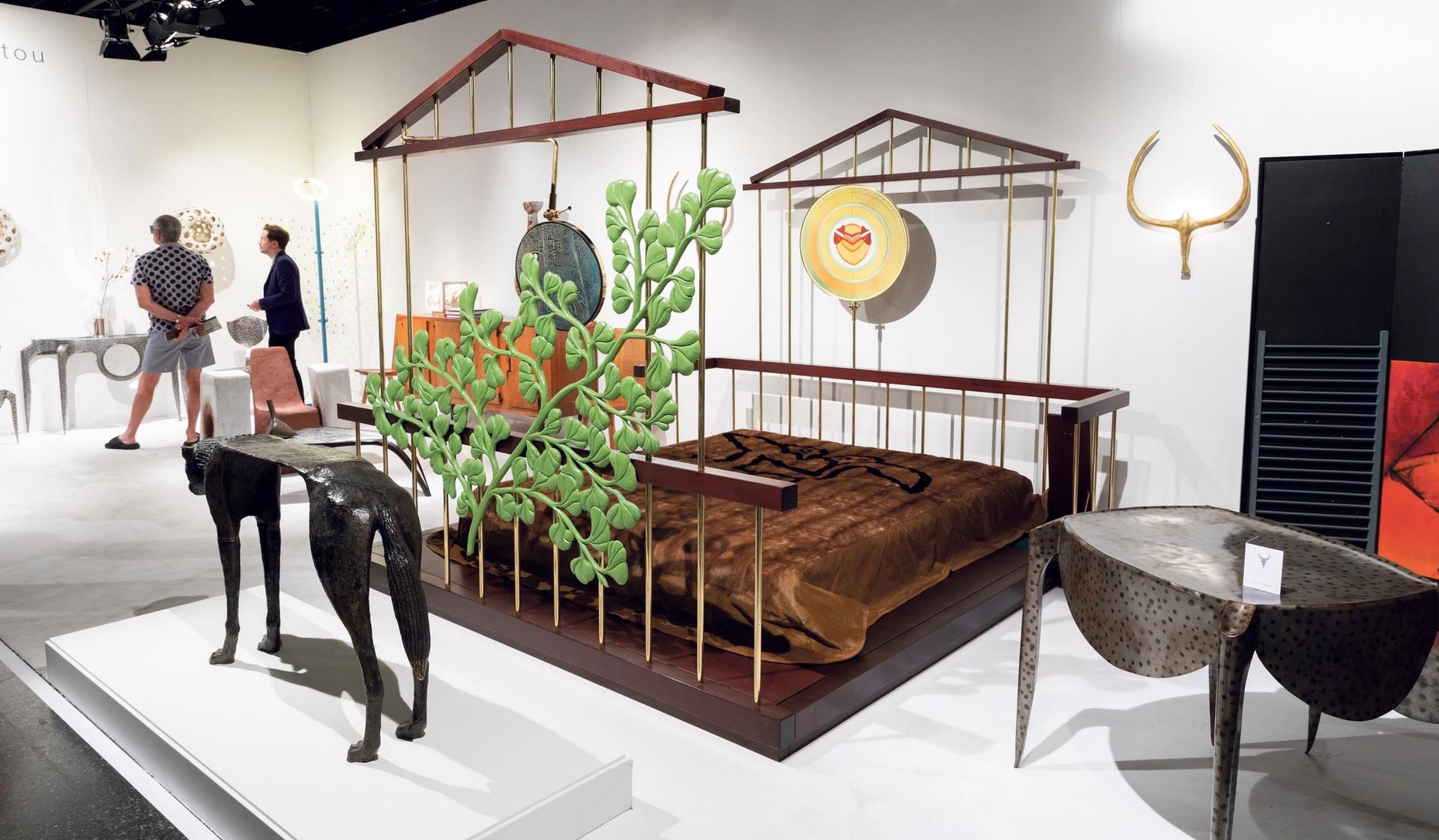
Crib (1974) by Max Ernst, Gastou Gallery david owens
Crib (1974) by Max Ernst
Gastou Gallery
Did Max Ernst sleep well? A lucky buyer might find out. The Parisian gallery Gastou brought Crib by the German Dadaist and Surrealist, made two years before his death in 1976. A hallucinatory disc hovers above the headrest and creeping ivy clings to the surrounding cage, while dancing spirits are sewn into the ‘quilt. Is the cage designed to keep demons at bay or trap them inside? Only one way to find out.
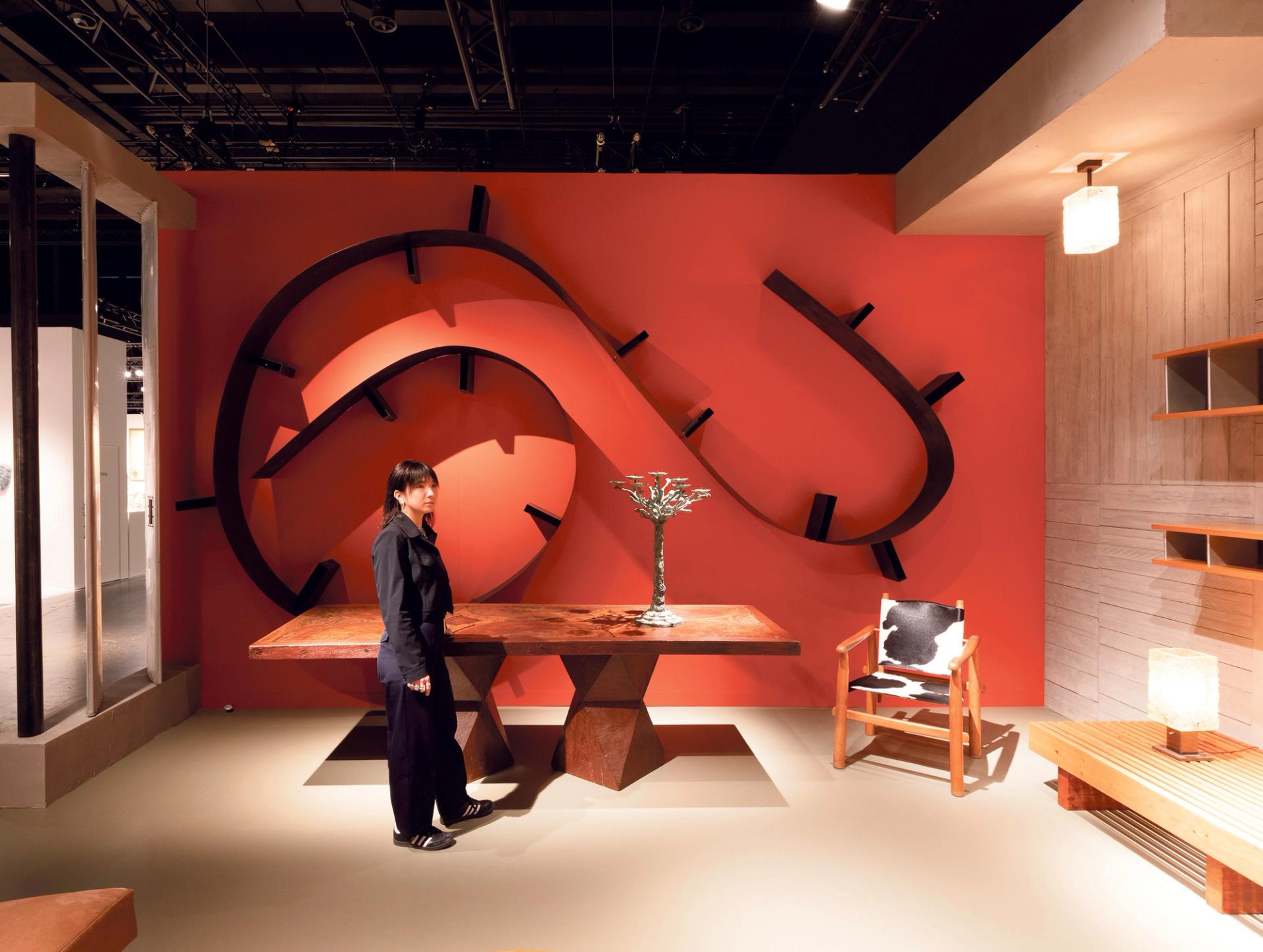
Ron Arad, Charlotte Perriand and José Zanine Caldas, Galerie Downtown François Laffanour david owens
Ron Arad, Charlotte Perriand and Jose Zanine Caldas
Downtown Francois Laffanour Gallery
Galerie Downtown François Laffanour in Paris has long been a mainstay of high-end 20th-century French design. The gallery returns to Design Miami/Basel with another series of rare classic pieces by Jean Prouvé, Charlotte Perriand and Pierre Jeanneret. This time they are associated with contemporary works by international designers such as Ron Arad, Choi Byung Hoon and Ettore Sottsass. The stand received the award for best gallery presentation at the fair, co-judged by architect Lee Mindel, who describes the curation as “imaginative, meticulous and elegant”.
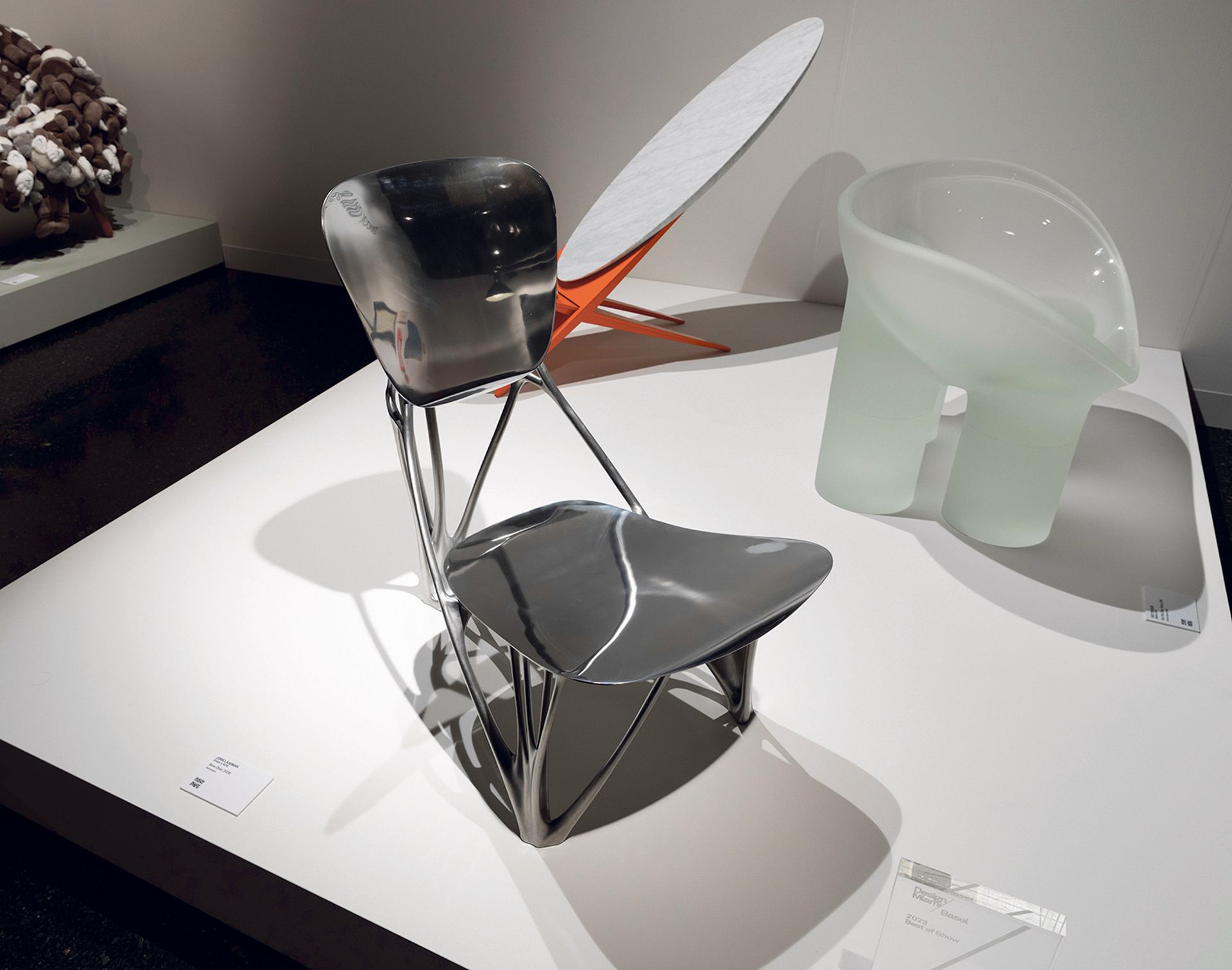
bone chair (2006) by Joris Laarman, Friedman Benda David Owens
Bone Chair (2006) by Joris Laarman
Friedman Benda
Friedman Benda has a group show of works from senior ultra-contemporary design scenes, including Daniel Arsham and KAWS. But the stand is especially noteworthy for this seemingly unremarkable aluminum chair by Dutch designer Joris Laarman. Gallery co-founder Marc Benda says Basel is a place to ‘take risks’ with ‘the endless possibilities of design’, and Laarman’s utilitarian bone chair is an example. This prototype is one of the first pieces of furniture made using artificial intelligence: its influence on digital design earned it the fair prize for best contemporary work.
